Opposition leader Steven Marshall finetune his aboriginal affairs policies by spending three days on the APY Lands to
OPPOSITION leader Steven Marshall had visited the APY Lands several times. The Sunday Mail joined him with less than a year before the State Election when he hopes to become the SA’s first ever Premier and Aboriginal affairs Minister.
SA News
Don't miss out on the headlines from SA News. Followed categories will be added to My News.
- Tjungkara Ken’s unique Archibald portrait
- State Government may take control of APY Lands corporation
- APY Lands community’s demands to Weatherill Cabinet
ON a red dirt road flanked by wide expanses carpeted with white spinifex and punctuated with short eucalypts Opposition Leader Steven Marshall points out the landscape that inspired the celebrated paintings of Albert Namatjira.
Mr Marshall stresses the importance of Namatjira’s Western art-influenced watercolours of the Outback that departed significantly from the abstract designs and symbols of traditional Aboriginal art, and inspired the art movement known as the Hermannsburg School.
“People thought the purples in his paintings were washed out. But that is exactly what it looks like,” Mr Marshall says.
The Opposition Leader has asked the Sunday Mail to join him on his eighth visit to the Anangu Pitjantjatjara Yankunytjatjara Lands in South Australia’s far North West as he finetunes his party’s Aboriginal Affairs policy.
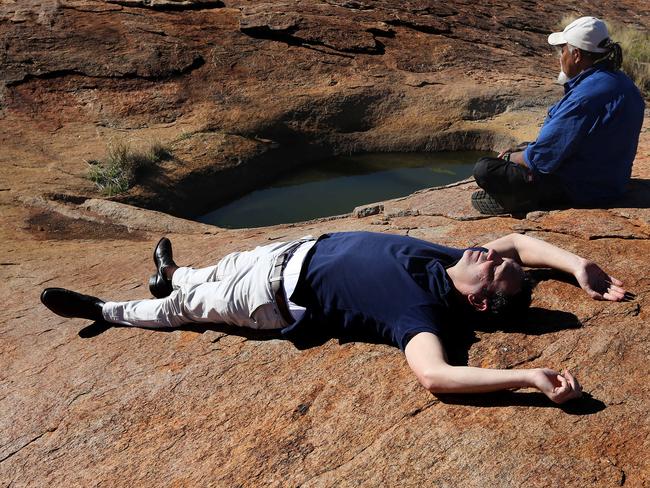
Mr Marshall is regularly on the CB radio and telling our guide, APY cultural liaison officer Lee Brady, how beautiful the country is.
Mr Brady refers to the Opposition Leader as “Stevie”.
Over the next few days Mr Brady takes “Stevie” and the Sunday Mail into a number of culturally significant sites on the lands including watering holes and a cave adorned with rock art.
“Not for the papers,” Mr Brady says.
“This is for your knowledge.”
Mr Marshall has made an effort to learn some of the local Pitjantjatjara language and believes it is terribly important the dialect is preserved.
During our three day, 1200 kilometre journey, Mr Marshall uses the words Palya (meaning good, OK, fine, hello, goodbye, thanks), Uwa (yes), Wiya (no), Tjukurpa (traditional law and creation stories) hundreds of times.
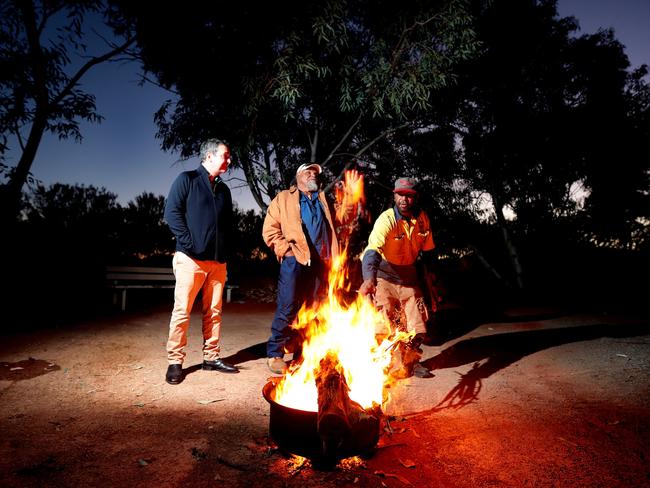
He warns us to be aware of signs that say Wiya Papa (no dogs).
Mr Marshall is keen to point out the great things about the region with a rich cultural heritage that dates back more than 50,000 years.
“I feel very strongly about their language, their storylines, their art and making sure we preserve these for the next generation,” Mr Marshall said.
“In many ways we are at a tipping point, where fewer and fewer of these customs are being passed on and preserved like they might have been in previous generations.
He says he is committed to “practical” measures over symbolism.
“I will personally drive an agenda to see real change,” Mr Marshall says.
“The first time I visited the APY Lands I saw some real challenges.
“I thought I had all of the answers.
“Every visit thereafter I have worked out there are no simple solutions to some fairly complex issues on the APY Lands.
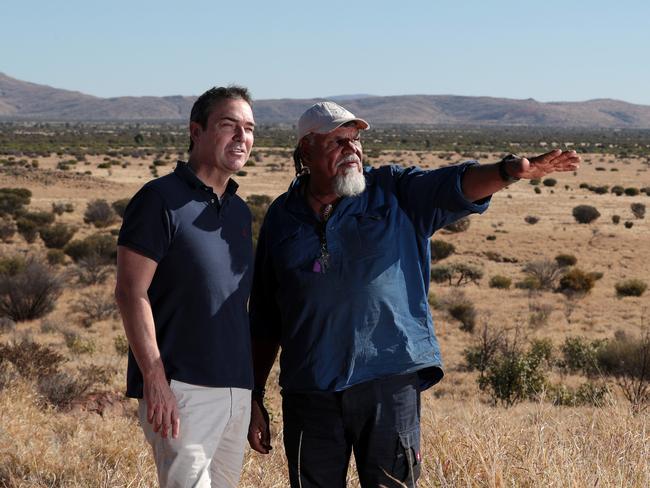
“What is needed, more than anything, is an Anangu-led strategic plan which defines their aspirations and then we make sure that we have the service delivery around to make that achievable.”
For opponents, Mr Marshall’s sentiments may seem like a cop-out — a politician with no answers.
But the issues he speaks of seem real and horribly difficult to fix without buy-in from the estimated 2200 people who live on the Lands.
Since 1981, when the lands were handed back to the original owners, governments have spent millions of dollars each and every year hopping to reverse horror statistics in regards to health, education, child sex abuse and domestic violence.
THERE have been some improvements. Fresh food is coming into townships on a weekly basis enticing locals to opt for a fresh piece of fruit over a can of soft drink.
A TAFE trading centre in Umuwa has seen growing student numbers.
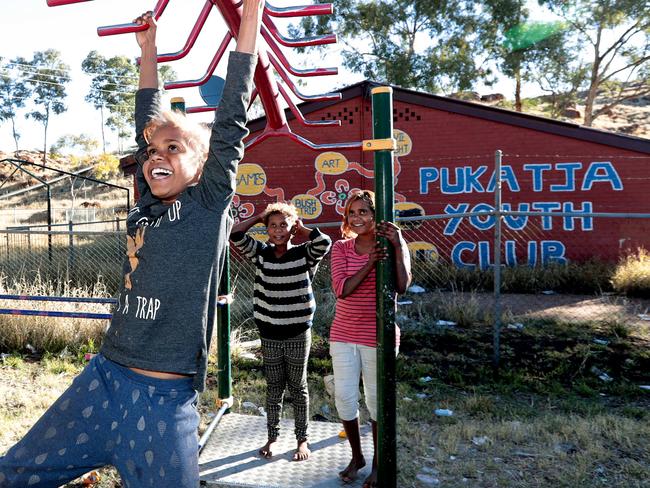
Road construction is providing easier access to various communities and jobs for locals. Art produced in the lands is winning national awards and hanging in Australia’s largest art galleries.
But the reality is comparisons to a third world country are inevitable.
Smiling children dart around the communities kicking a football or swinging off play equipment that is often in varying states of disrepair.
But many children are deaf by the time they reach school age because poor health as infants has led to serious ear infections. Domestic violence and sexual abuse is a continuing problem.
The average educational attainment in the Lands is about year three. Intergenerational welfare dependency is a way of life.
Mr Marshall is recognised in townships of Indulkana, Ernabella and Amata.
On our first night a barbecue in his honour at Umuwa, that is the home of much of the administrative services in the Lands, is well attended by people working in the region including health workers, anthropologists and police.
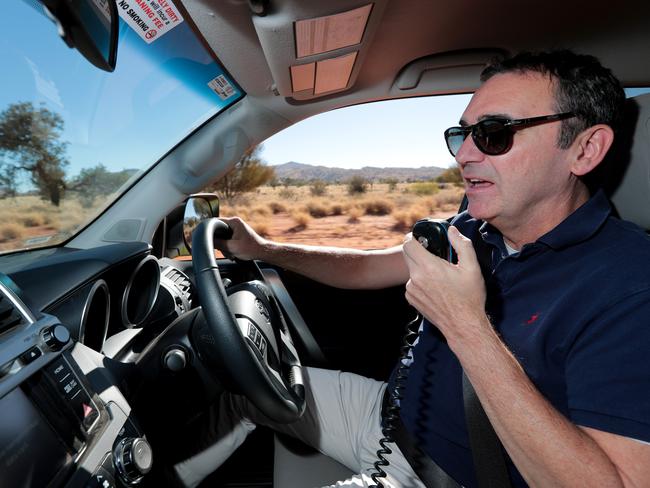
APY general manager Richard King tells the Sunday Mail mining and tourism are seen as viable industries for locals in the future.
Mr Marshall sees a huge opportunities in art.
“I just don’t think tourism is viable. There are still some significant issues about getting on and off the Lands” he said.
Permits that can take four weeks to obtain are required by all visitors to the APY Lands. In the townships Mr Marshall quickly recognises many of the locals artists.
Mr Marshall is like a schoolgirl meeting Justin Bieber when he sees Vincent Namatjira. He gets a selfie with the great-grandson of Albert Namatjira and a finalist in this year’s Archibald Prize.
Throughout our visit he points out other famous artists including Peter Mungkuri, Tiger Yaltangki and Pepai Jangala Carroll. Mr Marshall sees art as a perfect pathway for many Anangu.
“People can work diligently in an inspired way in the arts centres and they can then go off and fulfil some of their cultural requirements too.
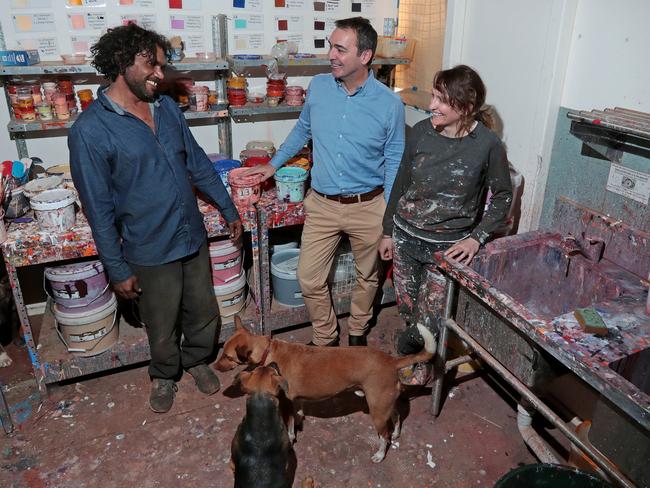
“They can build their career around that where it is not one or the other.”
Mr Marshall said telling a young person in the APY Lands to undertake a four year mechanical apprentice where they need to turn up every Monday is so “foreign” to the Anangu.
The idea of a 38 hour week, 48 weeks a year does not alway work when many Anangu may need time off during the year for “sorry business”, that occurs after someone dies, or other cultural requirements.
Mr Brady agrees but he also points to other issues including the fact that many young people, like in the city, were happy to stay on welfare.
“There are jobs around but why get a job when you get Centrelink ?,” he said.


